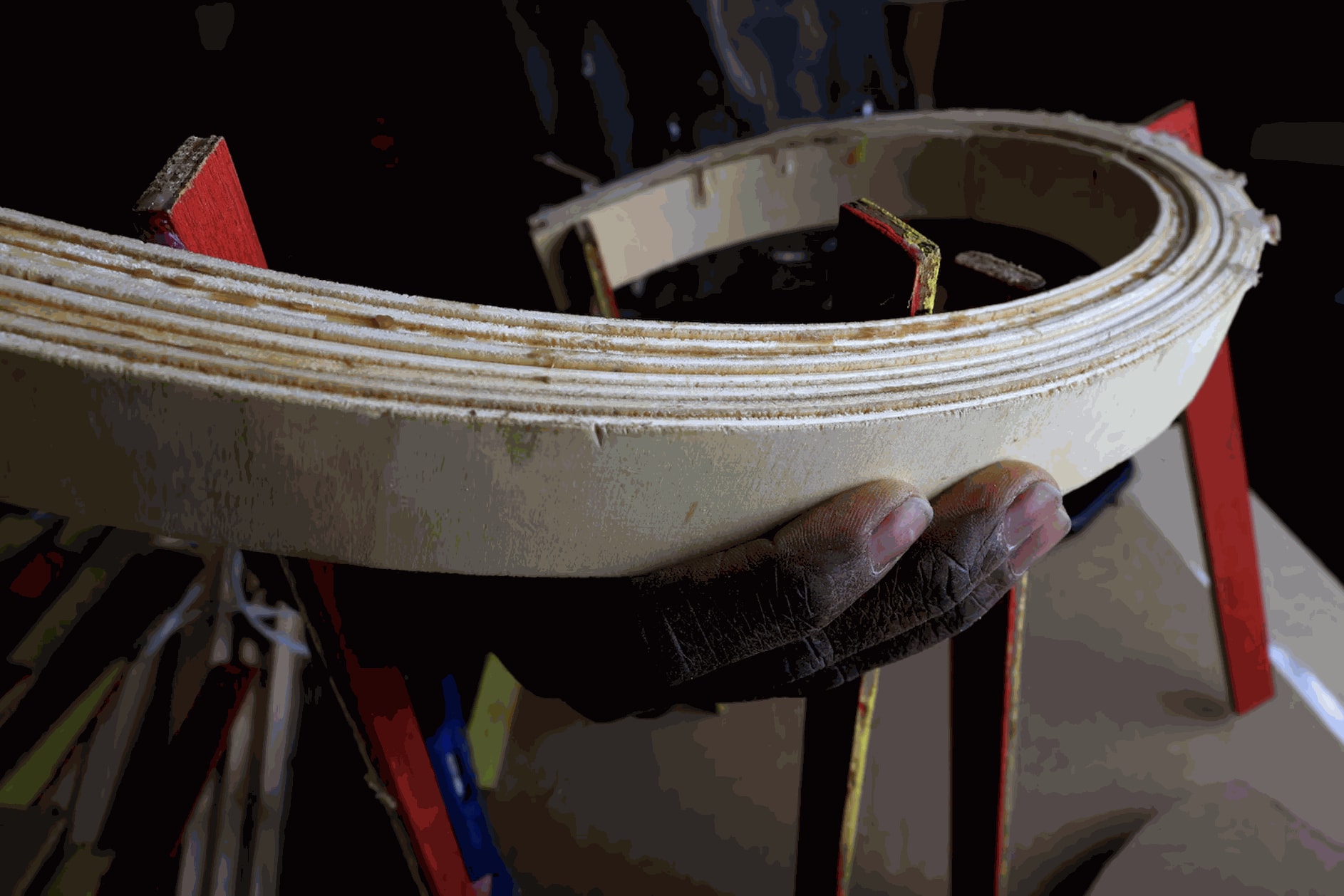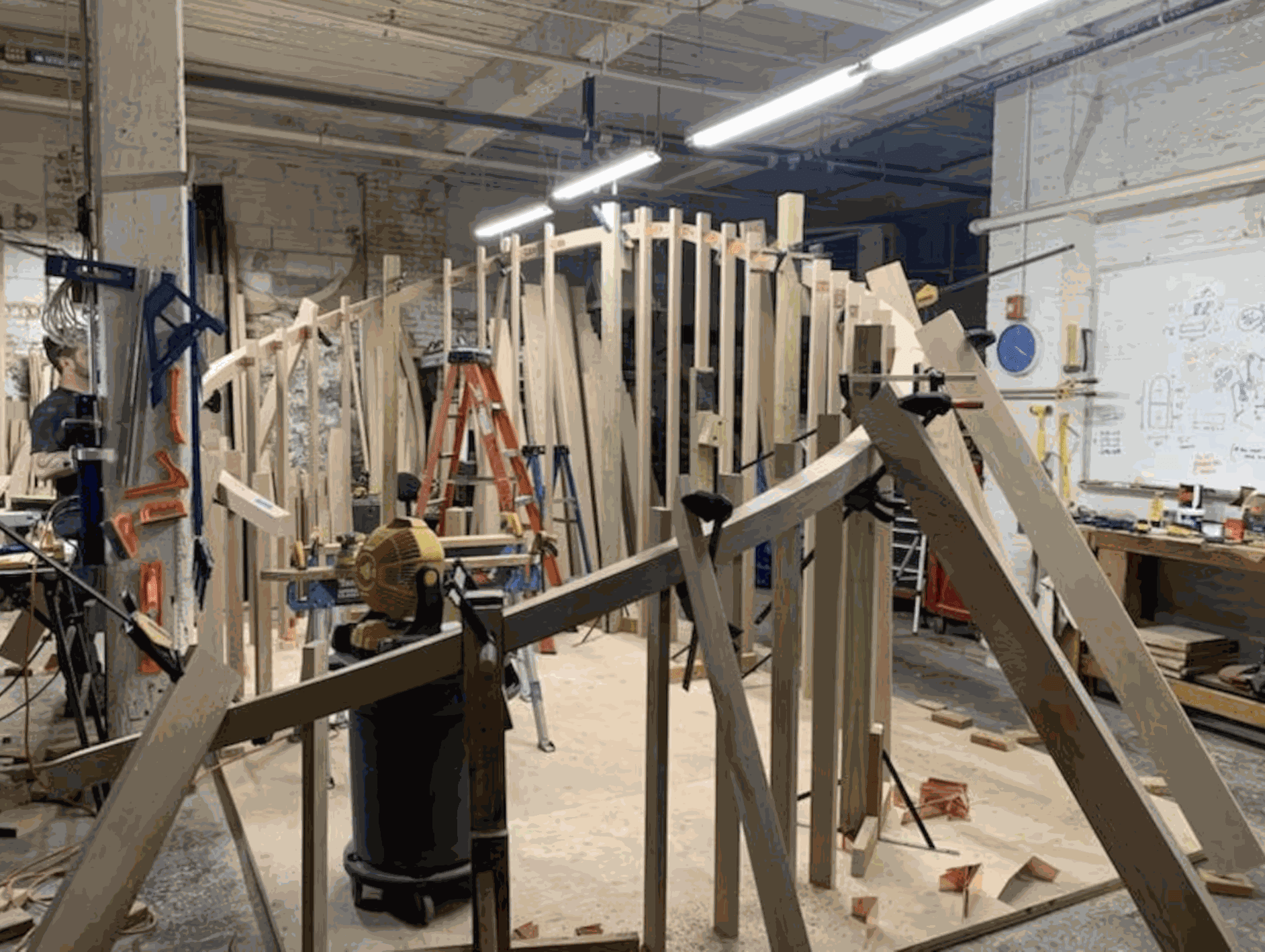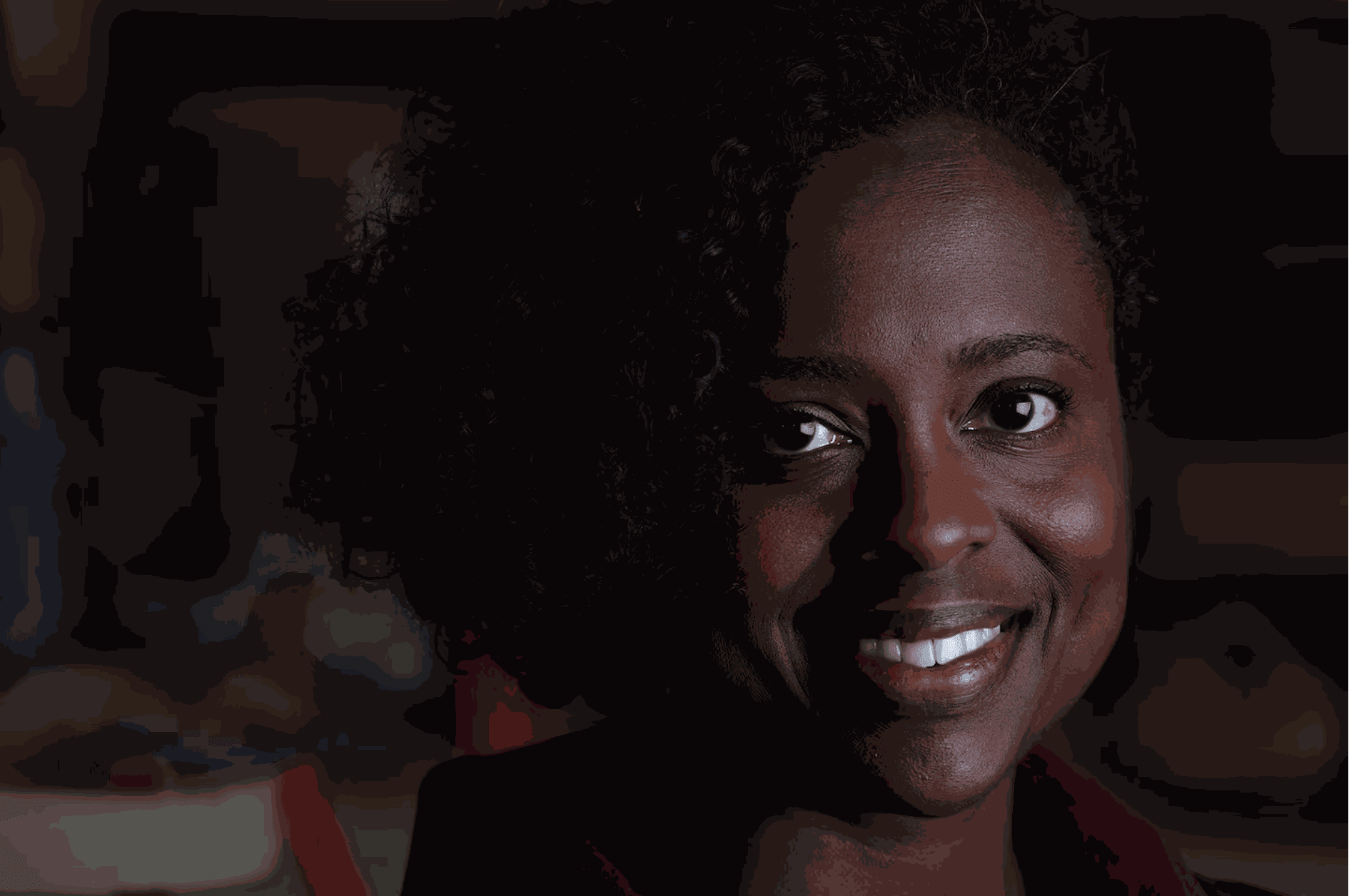By Cate McQuaid Updated May 14, 2025, 3:09 p.m.
Artist Alison Croney Moses works on a scale model of her installation, "This Moment for Joy" in her Allston studio as she prepares for the Boston Public Art Triennial. (Lane Turner/Globe Staff) LANE TURNER/GLOBE STAFF
Most of woodworker Alison Croney Moses’s sculptures are fairly small. She coaxes thin
veneers into delicate, undulant shapes that open, scoop, and hold.
When she conceived of the sculpture last fall, “we were not in this particular moment,” the
artist said, referring to the turmoil and anxiety Donald Trump’s presidency brought to her
world. But after the election, a safe space for joy seemed all the more urgent. Croney Moses,42, has been making rounded wood sculptures since she was an undergrad at
Rhode Island School of Design. It was only when she had children – now six and eight – that
she found her artistic mission.
“I have done a lot of work in my art practice to process my experience of that transition” to
motherhood, she said. “The societal context in which that happens is not caring and
supportive — specifically for Black women.”
Crafting a piece for the sprawling, ambitious Boston Public Art Triennial meant going much
bigger. “This Moment for Joy,” opening at the Triennial’s Lot Lab in Charlestown on May 22,
is large enough to take a walk in.
“This thing is ginormous,” Croney Moses said this week. The piece, a curved wooden structure meant to invite people inside, is over 8 feet tall and 14 feet wide.

Alison Croney Moses shapes laminated wood for a scale model of her Triennial installation in her Allston studio. (Lane Turner/Globe Staff) LANE TURNER/GLOBE STAFF
Black women are three times more likely than white women to die from pregnancy-related
causes, according to the Centers for Disease Control and Prevention. Croney Moses knew
those kinds of statistics when she developed postpartum preeclampsia after one pregnancy.
Her blood-pressure spiked, which can cause a stroke. “I’m the success story. I didn’t die,” she
told WBUR in 2023.
When she sought out community with other Black women, she found healing, and with other
mothers, organized gatherings for joy and play. “We have to find our joy, we as women, to feel free regardless of what society is doing,” Croney Moses said. “To feel free, we have to lean into our joy so that we actually have balance in our lives.”
Her own bodily experience began to inform her sculptures — womblike vessels, pods referring
to babies, surfaces like skin — and Croney Moses’s career took flight. In 2023, she left her job as associate director of the Eliot School of Fine & Applied Arts to make art full time. This
year, the Institute of Contemporary Art awarded her a 2025 James and Audrey Foster Prize.
Her success poses a question for an artist on the rise: Can she stay in a city that hasn’t
historically supported contemporary artists?
“I’m on a tipping point of, ‘Am I rooted in Boston? Is this feasible for me to continue my art
practice and continue to grow?’,” she said. “Things like the Boston Triennial, I think, make it
feasible.”
Then there’s community. “This Moment for Joy” is a space for gathering.
“This piece really has Black women in mind, but it’s for everyone,” she said. “I hope everyone
feels welcomed and encouraged to gather there.”

Alison Croney Moses's "This Moment for Joy" during the fabrication process at 4N Woodworks in Lowell. (credit?) ALISON CRONEY MOSES
Croney Moses and two other Boston artists, Andy Li and Evelyn Rydz, took part in the
Triennial’s Public Art Accelerator program. They met weekly for 14 weeks and continue to
get coaching and support from each other and the program. “You don’t really learn public art in school,” said Triennial assistant curator Jasper A. Sanchez, who runs the program. “It’s designed as an on-ramp for public art.”
The group learned how to untangle the red tape surrounding public art. When they grappled
with size, everything about Croney Moses’s practice changed. Usually, a simple sketch is all
she needs to start building a sculpture. “Half the design work happens as I’m making it,” she
said.
That wouldn’t wash for ginormous.
She started with her familiar, pod-shaped vessel form. “But when you translate that to a large-scale solid wood construction,” she said, “that feels really overpowering and kind of
oppressive.” To boot, she learned that enclosed spaces are verboten in public art — people
might sleep in them.
“I ended up jumping from this solid construction I normally work with to an open slatted
construction,” Croney Moses said. “I’m hoping that design will still have that feel of protection
and safety.”
After several iterations digitally and in the woodshop, the final product came together earlier
this month at wood fabricator 4 Nichols’s Lowell studio. Croney Moses felt good about it. “I
hope I do this again at this scale,” she said.
Next, she faces the “public” part of public art. At this size, she hopes her piece is seen as a
clarion invitation.
“It’s like a call to the public of ‘this is a moment for joy.’” Croney Moses said. “I know there’s
all this other work we have to do. But we cannot forget the joy.”

Alison Croney Moses in her Allston studio as she prepares for the Boston Triennial. (Lane Turner/Globe Staff) LANE TURNER/GLOBE STAFF
©2025 Boston Globe Media Partners, LLC

